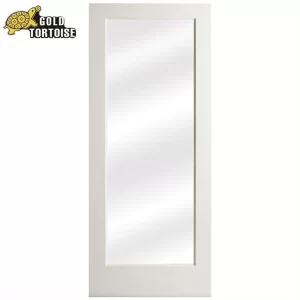The best exterior door for cold weather will typically have properties that help insulate your home, resist temperature-related issues, and withstand the harsh conditions associated with colder climates. Here are some options to consider:
1. Fiberglass Doors:
Fiberglass doors are an excellent choice for cold weather. They are durable, resistant to warping and cracking, and have good insulation properties. Many fiberglass doors have a solid core filled with insulating materials, contributing to energy efficiency.
2. Steel Doors with Thermal Breaks:
Steel doors can be effective in cold weather, especially if they are designed with thermal breaks. Thermal breaks are insulating materials within the door construction that help reduce heat transfer, making the door more energy-efficient.
3. Wood Doors with Proper Sealing:
Well-insulated wood doors can also be suitable for cold climates. However, it’s important to choose a high-quality wood door, properly seal it, and regularly maintain the finish to prevent issues like warping or moisture absorption.
4. Insulated Metal Doors:Portes métalliques isolées :
Insulated metal doors, especially those designed for energy efficiency, can be effective in cold weather. Look for doors with foam insulation cores and good weatherstripping.
5. Triple-Layered Doors:Portes à trois niveaux :
Some doors are designed with multiple layers, including an insulating core. Triple-layered doors, which often consist of steel or fiberglass with an insulating core, provide additional protection against the cold.
6. Weatherstripping and Sealing:Coupe-froid et scellement :
Regardless of the door material, the effectiveness of a door in cold weather also depends on the quality of weatherstripping and sealing. Ensure that the door is properly installed and that seals, thresholds, and weatherstripping are in good condition.
When selecting an exterior door for cold weather, consider factors such as energy efficiency, insulation, and the door’s ability to resist moisture. It’s advisable to choose a door that meets the energy efficiency standards for your region and to follow the manufacturer’s recommendations for installation and maintenance to maximize performance in cold climates.







